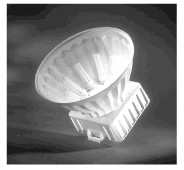These three sites (first on Google) list T5 at ~104 lumens/watt and T5HO at ~92.6 lumens/watt
http://www.4hydroponics.com/order/bulbs.asp
http://www.uppco.com/business/LI_05.asp
http://www.ecmweb.com/ops/electric_fluorescent_lamp_coming/
T5HO lumens/watt matches up to "Pentron41 HO" in Busko's AquaBotanic article. Interestingly, this is effectively the same as T8 above.
1w T5HO = 1.6w T12
1w T5 = 1.8w T12
(with a 48" bulb, T5 is 28w, T8 is 32w, T12 is 40w, and T5HO is 54w.)
Here is MH since Busko's article has 3 samples all well within 20% of the mean.
avg 84.1 kumens/watt
1w MH = 1.4w T12
(edited for formating)
http://www.4hydroponics.com/order/bulbs.asp
http://www.uppco.com/business/LI_05.asp
http://www.ecmweb.com/ops/electric_fluorescent_lamp_coming/
T5HO lumens/watt matches up to "Pentron41 HO" in Busko's AquaBotanic article. Interestingly, this is effectively the same as T8 above.
1w T5HO = 1.6w T12
1w T5 = 1.8w T12
(with a 48" bulb, T5 is 28w, T8 is 32w, T12 is 40w, and T5HO is 54w.)
Here is MH since Busko's article has 3 samples all well within 20% of the mean.
Code:
Metal Halide
MHN 150 11250 75.0
Iwasaki65 150 12000 80.0
MH 250 23000 92.01w MH = 1.4w T12
(edited for formating)

